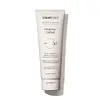What's inside
What's inside
 Key Ingredients
Key Ingredients

 Benefits
Benefits

 Concerns
Concerns

 Ingredients Side-by-side
Ingredients Side-by-side

Titanium Dioxide 2%
Cosmetic ColorantZinc Oxide 17%
Cosmetic ColorantDimethicone
EmollientCaprylic/Capric Triglyceride
MaskingDimethicone Crosspolymer
Emulsion StabilisingDimethicone/Vinyl Dimethicone Crosspolymer
Skin ConditioningButyloctyl Salicylate
Skin ConditioningGlyceryl Isostearate
EmollientPolysilicone-15
UV FilterTetrahexyldecyl Ascorbate
AntioxidantCamellia Sinensis Leaf Extract
AntimicrobialPunica Granatum Extract
AstringentVaccinium Macrocarpon Fruit Extract
AstringentSilica
AbrasivePolyhydroxystearic Acid
EmulsifyingCI 77891
Cosmetic ColorantCI 77492
Cosmetic ColorantCI 77491
Cosmetic ColorantCI 77499
Cosmetic ColorantTitanium Dioxide 2%, Zinc Oxide 17%, Dimethicone, Caprylic/Capric Triglyceride, Dimethicone Crosspolymer, Dimethicone/Vinyl Dimethicone Crosspolymer, Butyloctyl Salicylate, Glyceryl Isostearate, Polysilicone-15, Tetrahexyldecyl Ascorbate, Camellia Sinensis Leaf Extract, Punica Granatum Extract, Vaccinium Macrocarpon Fruit Extract, Silica, Polyhydroxystearic Acid, CI 77891, CI 77492, CI 77491, CI 77499
Water
Skin ConditioningDimethicone
EmollientCaprylic/Capric Triglyceride
MaskingIsononyl Isononanoate
EmollientCysteamine Hcl
AntioxidantNiacinamide
SmoothingC12-16 Alcohols
EmollientLecithin
EmollientTetrahexyldecyl Ascorbate
AntioxidantCetearyl Alcohol
EmollientGlycerin
HumectantHeparan Sulfate
Skin ConditioningPolysilicone-11
Tocopheryl Acetate
AntioxidantHydrogenated Lecithin
EmulsifyingPalmitic Acid
EmollientHydroxyacetophenone
AntioxidantDiethylhexyl Syringylidenemalonate
Skin ProtectingPolyacrylate-13
Butylene Glycol
HumectantEpilobium Angustifolium Flower/Leaf/Stem Extract
Skin ConditioningMannitol
HumectantErgothioneine
AntioxidantSclerotium Gum
Emulsion StabilisingLysolecithin
EmulsifyingPolyisobutene
Decyl Glucoside
CleansingPullulan
Aminomethyl Propanol
BufferingXanthan Gum
EmulsifyingSodium Stearoyl Glutamate
CleansingParfum
MaskingPolysorbate 20
EmulsifyingPropanediol
SolventEthylhexylglycerin
Skin ConditioningPhenoxyethanol
PreservativeDisodium EDTA
Water, Dimethicone, Caprylic/Capric Triglyceride, Isononyl Isononanoate, Cysteamine Hcl, Niacinamide, C12-16 Alcohols, Lecithin, Tetrahexyldecyl Ascorbate, Cetearyl Alcohol, Glycerin, Heparan Sulfate, Polysilicone-11, Tocopheryl Acetate, Hydrogenated Lecithin, Palmitic Acid, Hydroxyacetophenone, Diethylhexyl Syringylidenemalonate, Polyacrylate-13, Butylene Glycol, Epilobium Angustifolium Flower/Leaf/Stem Extract, Mannitol, Ergothioneine, Sclerotium Gum, Lysolecithin, Polyisobutene, Decyl Glucoside, Pullulan, Aminomethyl Propanol, Xanthan Gum, Sodium Stearoyl Glutamate, Parfum, Polysorbate 20, Propanediol, Ethylhexylglycerin, Phenoxyethanol, Disodium EDTA
 Reviews
Reviews

Ingredients Explained
These ingredients are found in both products.
Ingredients higher up in an ingredient list are typically present in a larger amount.
This ingredient is an emollient, solvent, and texture enhancer. It is considered a skin-softener by helping the skin prevent moisture loss.
It helps thicken a product's formula and makes it easier to spread by dissolving clumping compounds.
Caprylic Triglyceride is made by combining glycerin with coconut oil, forming a clear liquid.
While there is an assumption Caprylic Triglyceride can clog pores due to it being derived from coconut oil, there is no research supporting this.
Learn more about Caprylic/Capric TriglycerideDimethicone is a type of synthetic silicone created from natural materials such as quartz.
What it does:
Dimethicone comes in different viscosities:
Depending on the viscosity, dimethicone has different properties.
Ingredients lists don't always show which type is used, so we recommend reaching out to the brand if you have questions about the viscosity.
This ingredient is unlikely to cause irritation because it does not get absorbed into skin. However, people with silicone allergies should be careful about using this ingredient.
Note: Dimethicone may contribute to pilling. This is because it is not oil or water soluble, so pilling may occur when layered with products. When mixed with heavy oils in a formula, the outcome is also quite greasy.
Learn more about DimethiconeTetrahexyldecyl Ascorbate (THD) is a stable and oil-soluble form of Vitamin C.
THD is special in that it has the ability to travel deeper into skin than traditional ascorbic acid while maintaining the same skin benefits (double win!).
Because it’s oil-soluble, THD dives deep into your skin’s fatty layers (think ceramides and cholesterol) to fight off the kind of free radicals that mess with your skin barrier. This makes it a great pair with water-based vitamin C (ascorbic acid) that mainly works on the surface.
Even at just 0.1%, THD is already showing great antioxidant activity. When used up to 2%, it helps keep your skin happy and calm, especially when it’s stressed from pollution or sun.
Want to fade dark spots or tackle hyperpigmentation? You’ll want 5% or more. Pairing it with brightening buddies like niacinamide or licorice root gives even better results. One study even used 30% THD with other brighteners and saw real results on stubborn discoloration, even in melasma-prone skin.
A note on THD: It’s has a slightly silky, oily texture and usually shows up colorless or pale yellow (though the exact shade can vary by supplier).
While you can sneak it into water-based formulas, it really shines when paired with silicones or oils, which help your skin soak it up better.
THD is pretty stable, but it’s still vulnerable to degradation like ascorbic acid. Too much light or heat (above 113°F / 45°C) can break it down over time. Go for dark and opaque packaging that keeps it safe and shady!
Read more about other types of Vitamin C:
Learn more about Tetrahexyldecyl Ascorbate